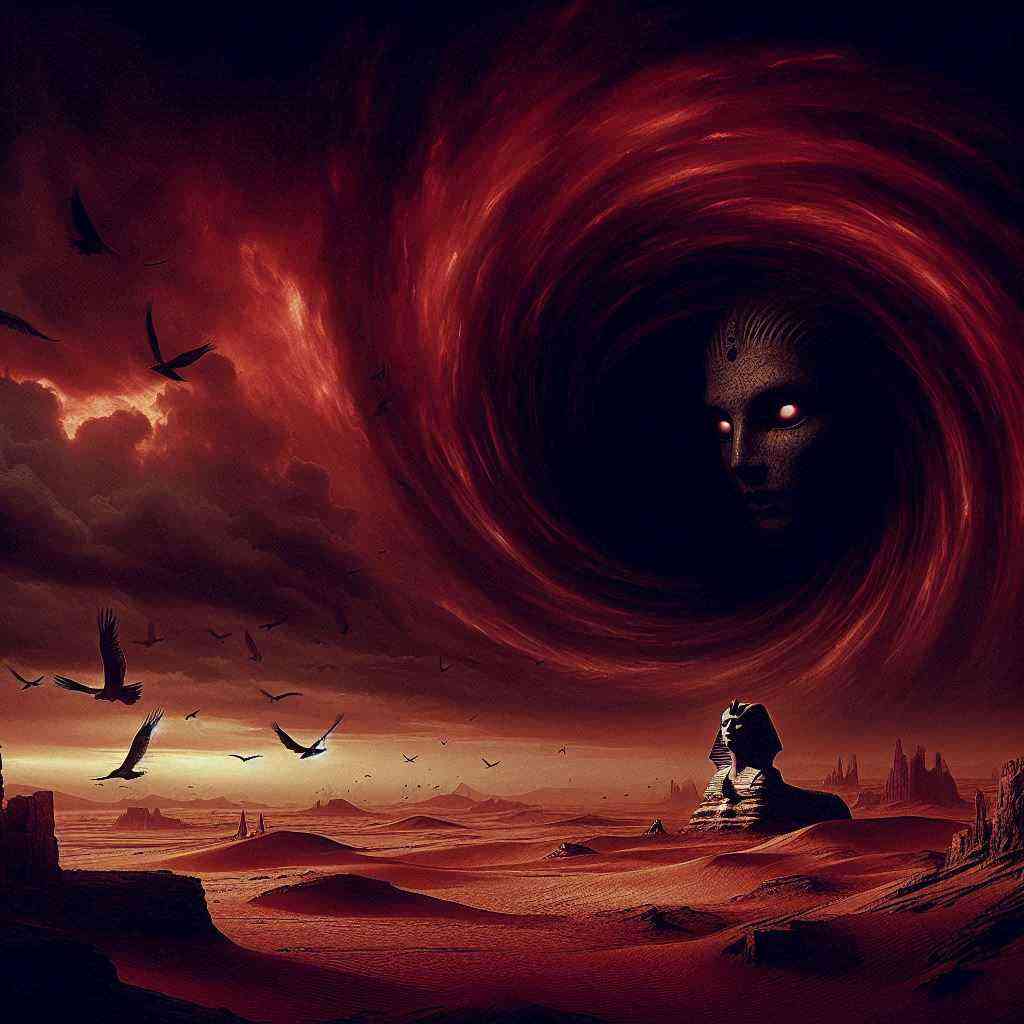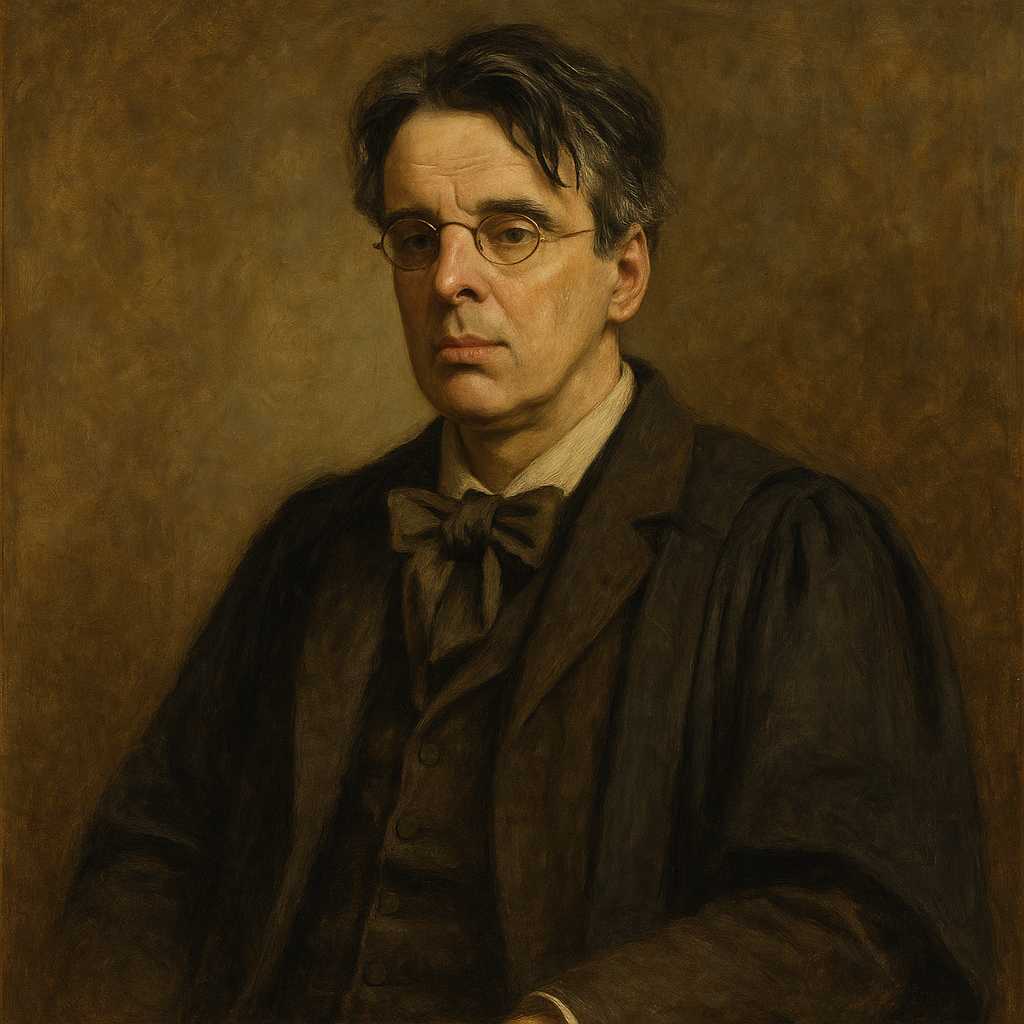The Second Coming
William Butler Yeats
1865 to 1939

Turning and turning in the widening gyre
The falcon cannot hear the falconer;
Things fall apart; the centre cannot hold;
Mere anarchy is loosed upon the world,
The blood-dimmed tide is loosed, and everywhere
The ceremony of innocence is drowned;
The best lack all conviction, while the worst
Are full of passionate intensity.
Surely some revelation is at hand;
Surely the Second Coming is at hand.
The Second Coming! Hardly are those words out
When a vast image out of Spiritus Mundi
Troubles my sight: somewhere in sands of the desert
A shape with lion body and the head of a man,
A gaze blank and pitiless as the sun,
Is moving its slow thighs, while all about it
Reel shadows of the indignant desert birds.
The darkness drops again; but now I know
That twenty centuries of stony sleep
Were vexed to nightmare by a rocking cradle,
And what rough beast, its hour come round at last,
Slouches towards Bethlehem to be born?
William Butler Yeats's The Second Coming
William Butler Yeats's poem "The Second Coming," written in 1919, is a powerful and prophetic work that captures the chaos and uncertainty of the post-World War I era while also serving as a timeless commentary on societal breakdown and spiritual crisis. Through its vivid imagery, complex symbolism, and apocalyptic tone, the poem offers a stark vision of a world on the brink of catastrophic change.
The poem opens with the striking image of a falcon spiraling out of control, unable to hear its master's call. This metaphor sets the stage for the poem's central theme: the loss of order and stability in a world that seems to be spinning into chaos. The "widening gyre" represents the cyclical nature of history, suggesting that as time progresses, the orbit of civilization moves further from its center, leading to increased instability and disorder.
Yeats employs a series of powerful, ominous phrases to depict this breakdown of society. "Things fall apart; the centre cannot hold" is perhaps the most famous line from the poem, encapsulating the sense of impending collapse. The imagery of "Mere anarchy" being "loosed upon the world" and a "blood-dimmed tide" further reinforces the atmosphere of violence and chaos. The drowning of "The ceremony of innocence" suggests the loss of traditional values and moral certainties in this new, unstable world.
The poet then presents a stark contrast between "the best" and "the worst" of humanity. Those who might be expected to lead and provide guidance in times of crisis "lack all conviction," while destructive forces are "full of passionate intensity." This dichotomy reflects Yeats's disillusionment with the political and social leaders of his time and his fear that extremism and fanaticism might fill the void left by their ineffectuality.
The second stanza of the poem shifts from the general decay of civilization to a more specific and esoteric vision. Yeats draws on his interest in mysticism and the occult, invoking the concept of "Spiritus Mundi," or the collective soul of the universe. From this spiritual realm emerges a terrifying apparition: a sphinx-like creature with "lion body and the head of a man." This beast, with its "gaze blank and pitiless as the sun," embodies the merciless force of historical change.
The image of the beast "slouching towards Bethlehem to be born" is a powerful subversion of Christian imagery. Bethlehem, the birthplace of Jesus, here becomes the site of an anti-nativity, the emergence of a "rough beast" that heralds not salvation but destruction. This inversion of religious symbolism underscores Yeats's sense that the old order, including traditional religious beliefs, is being upended.
The poem's final lines, framed as a question, leave the reader with a sense of dread and uncertainty about the future. The beast's "hour come round at last" suggests an inexorable historical process, a cycle of destruction and rebirth that has been set in motion and cannot be stopped. The use of the word "slouches" to describe the beast's movement towards its birthplace adds to the sense of inevitability while also conveying a kind of grotesque lethargy, as if even this harbinger of doom is wearied by the weight of history.
Throughout the poem, Yeats masterfully employs the techniques of modernist poetry. The fragmented imagery, the juxtaposition of the mundane and the mythical, and the use of allusive, symbolic language all contribute to the poem's unsettling effect. The rhythm and structure of the poem, with its loose adherence to the form of the sonnet, reflect the tension between order and chaos that is central to its themes.
"The Second Coming" can be read as both a response to the specific historical moment in which it was written and a broader meditation on the cycles of history and the nature of change. The poem's enduring power lies in its ability to speak to times of crisis and uncertainty across different eras. Its vivid imagery and prophetic tone have made it one of the most widely quoted poems of the 20th century, with its phrases often invoked to describe political and social upheavals.
In conclusion, "The Second Coming" stands as a masterpiece of modernist poetry, a work that captures the anxiety and disillusionment of its age while also transcending its historical moment to offer a timeless reflection on the human condition. Through its apocalyptic vision, Yeats confronts us with the fragility of civilization and the terrifying possibilities that lie dormant in the cycles of history, challenging readers to contemplate their place in a world where the center no longer holds.
This text was generated by AI and is for reference only. Learn more
Want to join the discussion? Reopen or create a unique username to comment. No personal details required!



Comments
No comments yet. Be the first to comment!